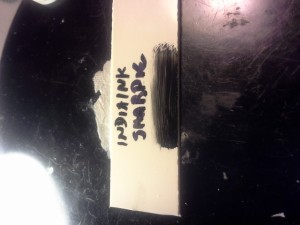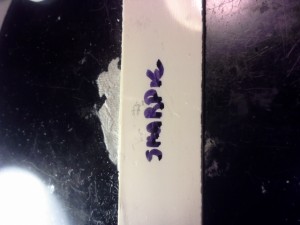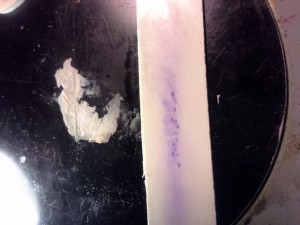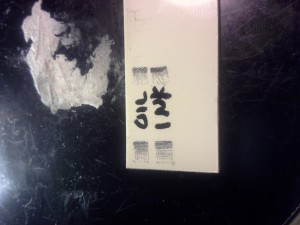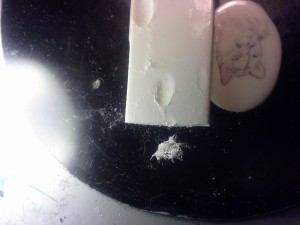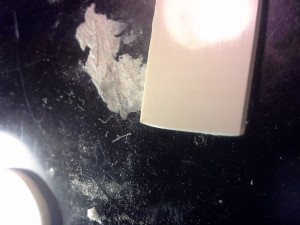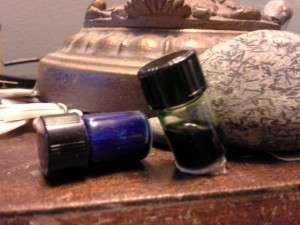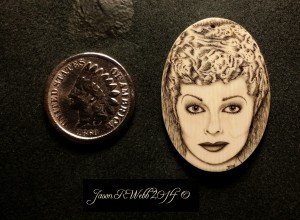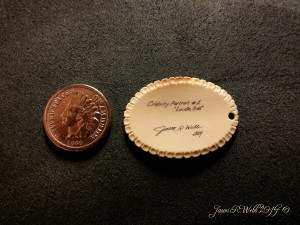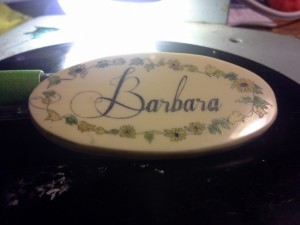 We finished and sent a scrimshaw Nantucket Basket Topper last week to a customer and wanted to share a picture of it here. We created this on a piece of casein, an alternative ivory from England which comes very close to mammoth ivory in most respects. It’s hard, not pliable like most plastic substitutes we’ve worked with as of late and scrimshaws very well provided you sand and polish it to a mirror finish. The customer requested yellow flowers other than roses, so we found several pics on Flickr of snapdragons and other wildflowers to base them on. Three coats of Renaissance Wax protects it from dust and light abrasions. While they won’t need it for awhile, we also sent 1/2 dram of the wax along with instructions on how to apply it when they need to reapply it. A little goes a long way – we’ve had our 65ml jar for over five years now and we’ just reached the 1/2 way mark.
We finished and sent a scrimshaw Nantucket Basket Topper last week to a customer and wanted to share a picture of it here. We created this on a piece of casein, an alternative ivory from England which comes very close to mammoth ivory in most respects. It’s hard, not pliable like most plastic substitutes we’ve worked with as of late and scrimshaws very well provided you sand and polish it to a mirror finish. The customer requested yellow flowers other than roses, so we found several pics on Flickr of snapdragons and other wildflowers to base them on. Three coats of Renaissance Wax protects it from dust and light abrasions. While they won’t need it for awhile, we also sent 1/2 dram of the wax along with instructions on how to apply it when they need to reapply it. A little goes a long way – we’ve had our 65ml jar for over five years now and we’ just reached the 1/2 way mark.
We have a limited amount of this material for those interested in either creating their own Nantucket Basket Topper or having one created for them. Email “questions@scrimshaw.com” and let us know your needs, we’ll do our best to fulfill your needs.
Anyone not familiar with Renaissance Wax should really become acquainted with it if they make any fine work with ivory or wood. We found after experimenting with it that it’s best to wipe it on with a soft cloth and let it sit and dry, preferably for several hours. Once it’s completely dry, using another cloth to wipe it off leaves a nice shine provided the material was polished to begin with, and will protect the ink in the incisions. When we first tried it, we wiped it on then wiped it off, similar to shoe polish (which is what it smells like). In some cases this lifted the oil paint we were using out of some of the finer lines, probably due to the fact that the paint was also not dry (the hurrier I go, the behinder I get). Using it correctly on dry surfaces works wonders.
